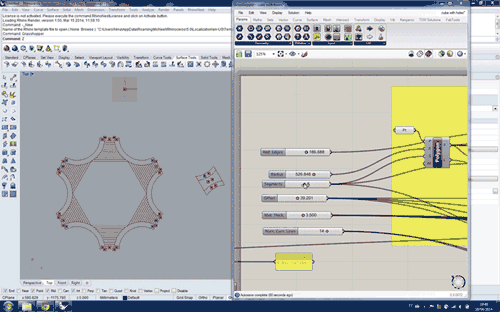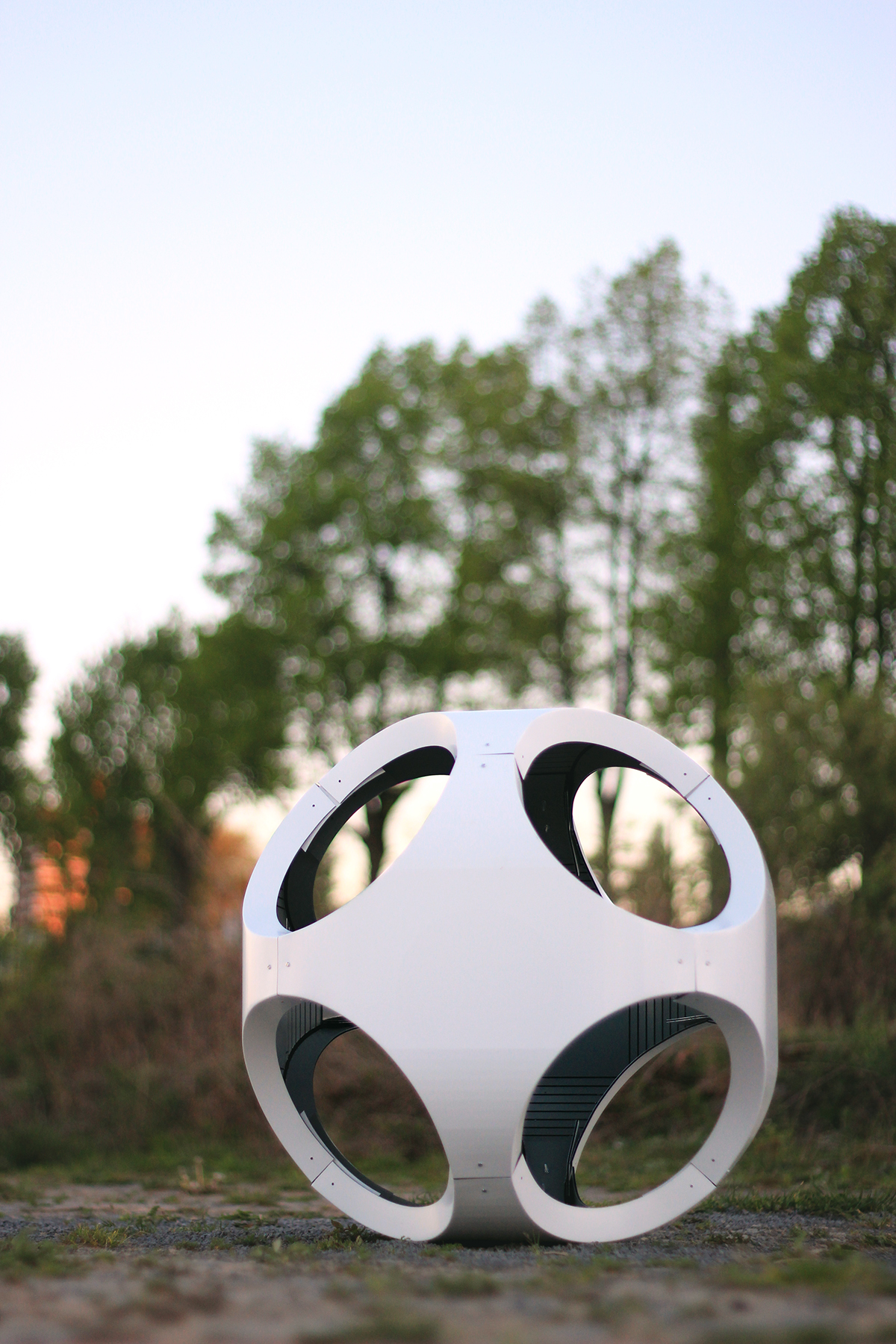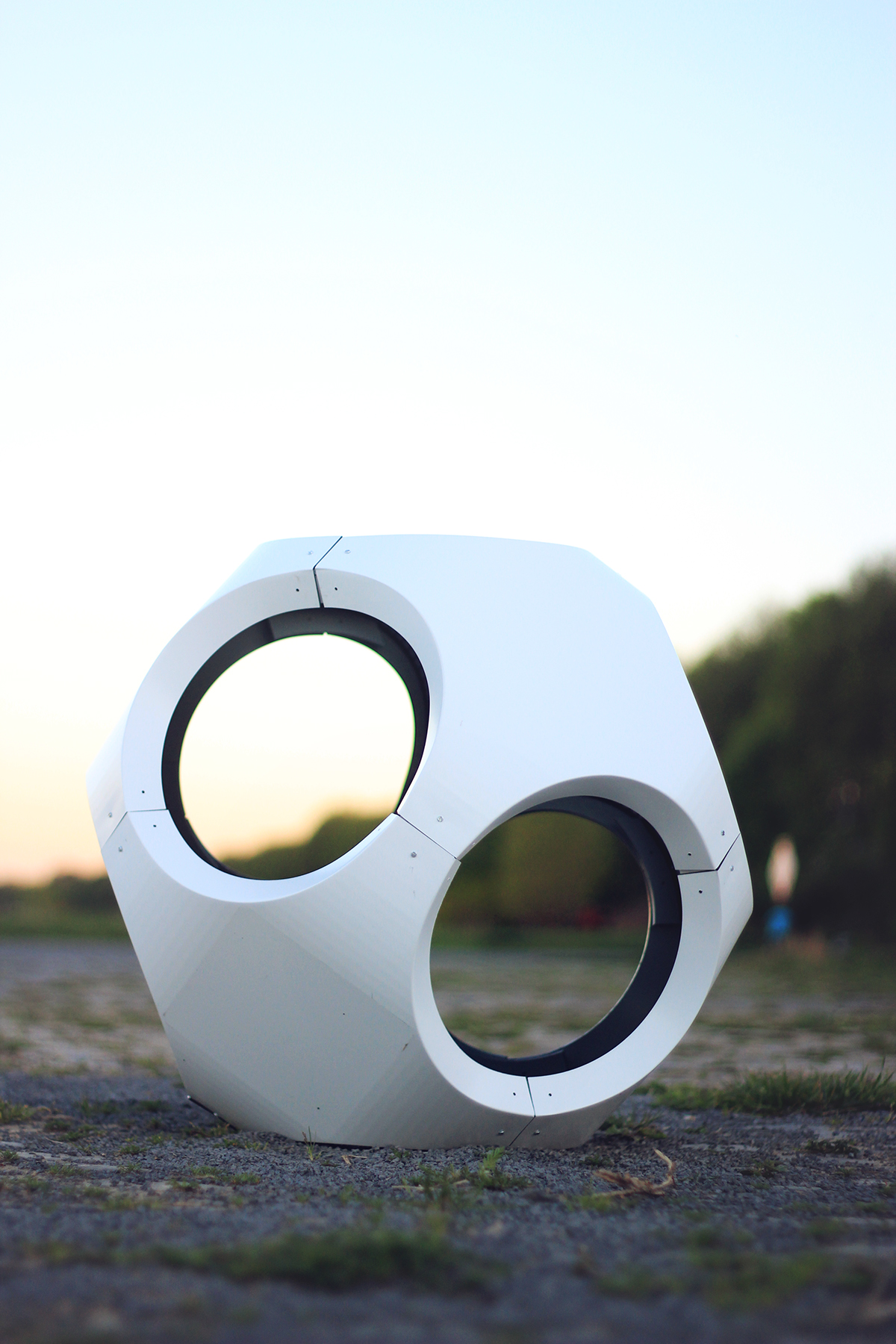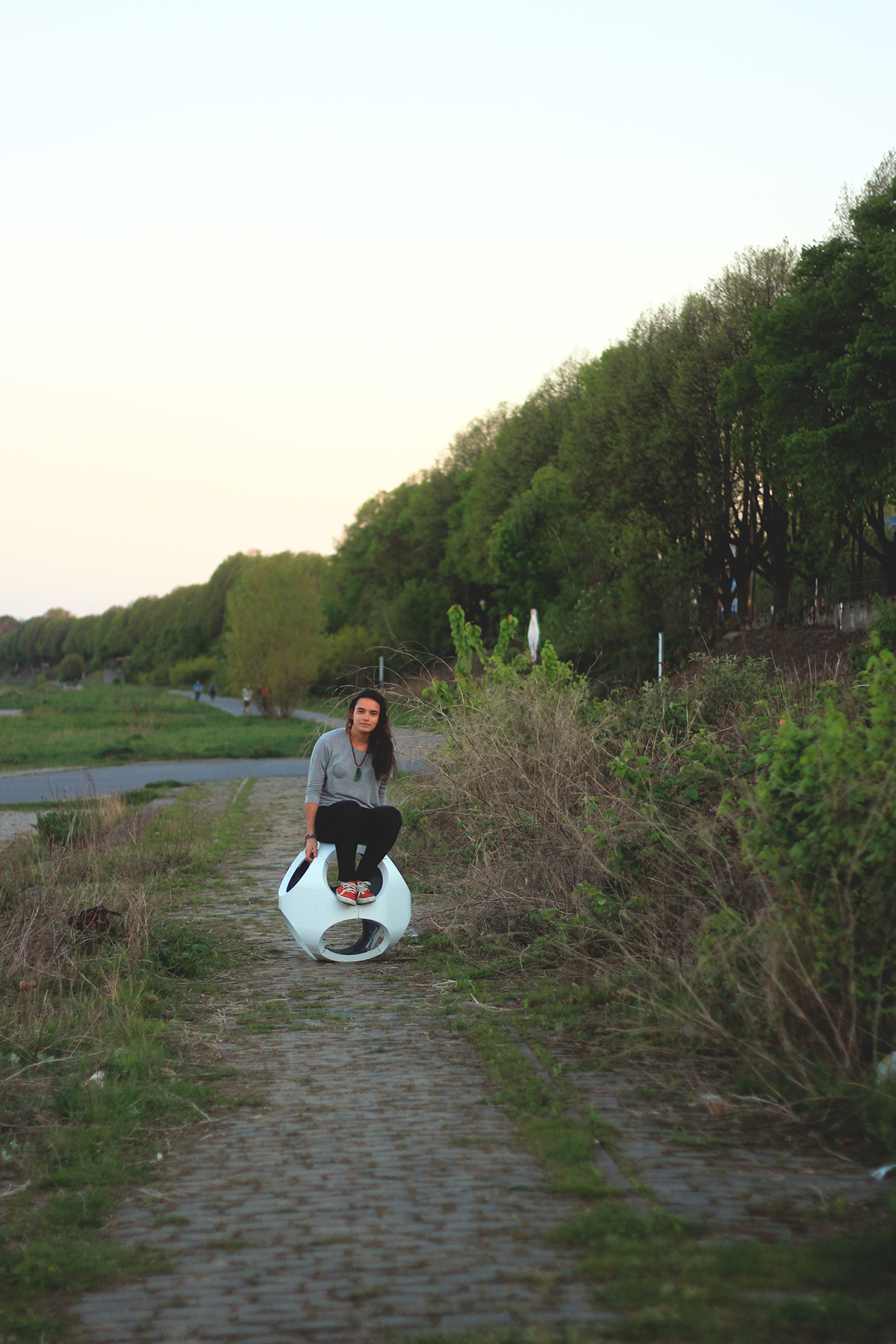Inspired by Ernst Haeckel‘s illustrations of marine microorganisms, solids were created in Rhino 3D working in conjunction with Grasshopper.
The first solids created were simply polyhedrons with spheres subtracted at every vertex. By unrolling theses surfaces on Rhino and using the laser cutter to produce the flattened surfaces, the solids were then again built with paper. Due to the paper‘s properties and the continuous surfaces instead of straight edge polyhedrons, curved solids were formed.
The cube was used as the base for the final solid produced. The basic module of one the faces was created in Grasshopper. The use of the tool means that certain parameters of the form (e.g. size, radius of circles, offset and material thickness) can be controlled individually in a manner that all related components will be correspondingly changed as well. For example when the size of the surface increases, so does the connector.
Different materials were experimented with in order to evaluate the feasibility of the envisaged solid. Initially paper and corrugated plastic posters were used to be later followed by Di-Bond, an aluminium composite that can be easily folded after milling.
With the aid of connectors also milled on Di-Bond, the surfaces combine to form a gapped curved solid.
The first solids created were simply polyhedrons with spheres subtracted at every vertex. By unrolling theses surfaces on Rhino and using the laser cutter to produce the flattened surfaces, the solids were then again built with paper. Due to the paper‘s properties and the continuous surfaces instead of straight edge polyhedrons, curved solids were formed.
The cube was used as the base for the final solid produced. The basic module of one the faces was created in Grasshopper. The use of the tool means that certain parameters of the form (e.g. size, radius of circles, offset and material thickness) can be controlled individually in a manner that all related components will be correspondingly changed as well. For example when the size of the surface increases, so does the connector.
Different materials were experimented with in order to evaluate the feasibility of the envisaged solid. Initially paper and corrugated plastic posters were used to be later followed by Di-Bond, an aluminium composite that can be easily folded after milling.
With the aid of connectors also milled on Di-Bond, the surfaces combine to form a gapped curved solid.
Project supervised by Hans Sachs and Sebastian Bächer for the class "Digital Crafting" at KISD.

Initial experiments in paper and corrugated plastic.
Overview of grasshopper network and resulting module and connector
Milling of modules and connectors in Di-Bond.
First results of milling in Di-Bond.

Changing grasshopper parameters and the resulting changes to the module and connector.

Final solid built from 6 modules, 12 connectors, nuts and bolts.




